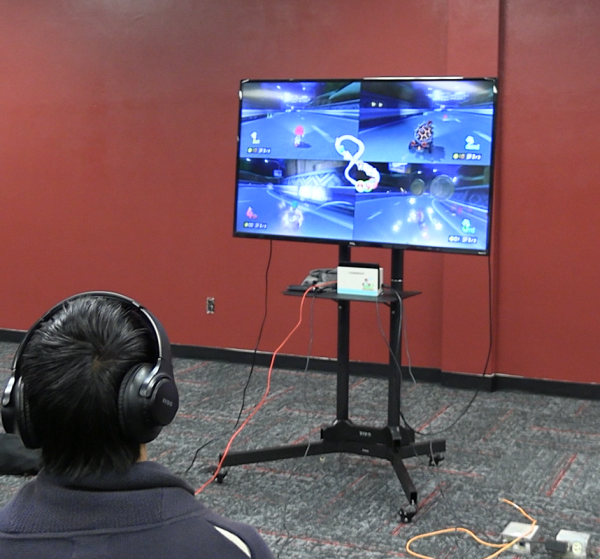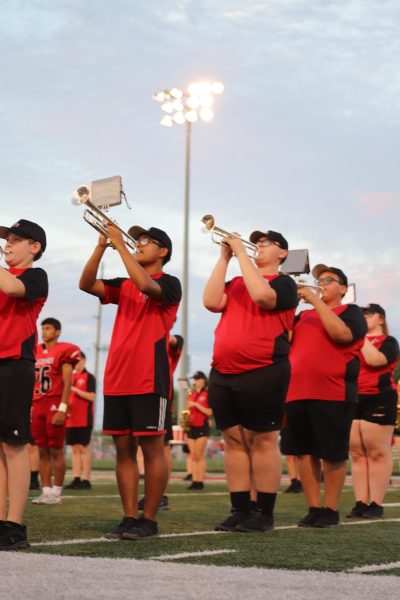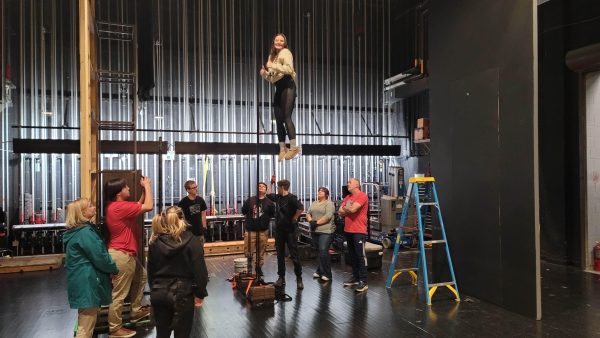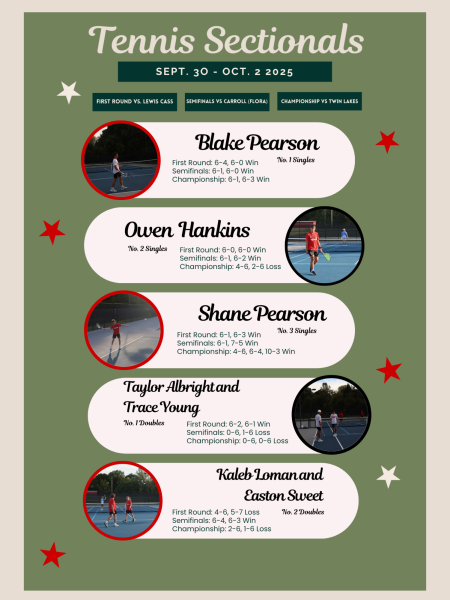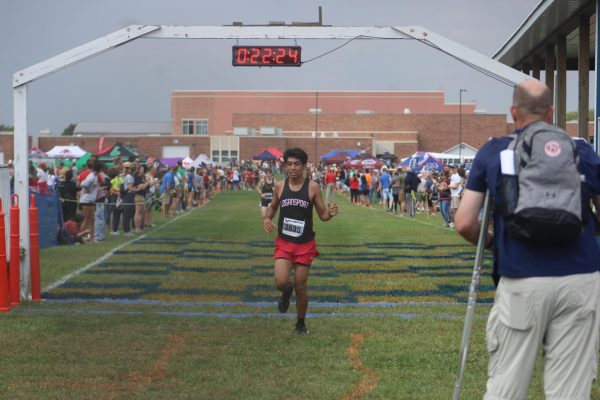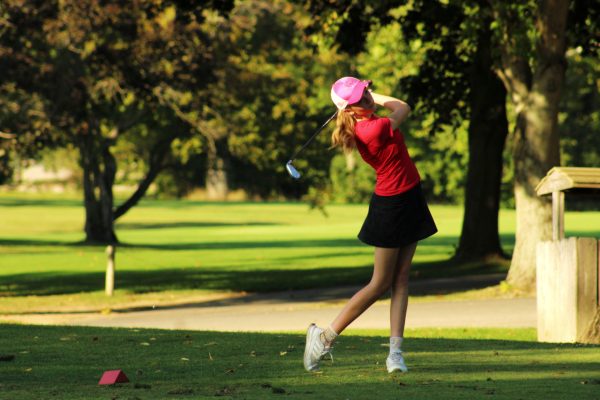Q&A with Jerika Razer About Injuries in Swimming
Getting set in the starting block, sophomore Jerika Razer prepares to swim the butterfly. Razer’s skin is covered by bruises from suction cup therapy to help with her injury.
How have your injuries affected you and the beginning of swim season?
My injury isn’t a crazy injury just because we don’t really know what’s going on yet, but it’s made me unable to swim. Syd, the athletic trainer, has been a big help in trying to figure out what going on, literally doing everything she can to make it better.
Do you think you’ll be ready for the first meet?
Honestly, I’m very unsure. Even if we get my shoulder better, we don’t know if I will be swim-ready because it takes time to get back into shape. The likely hood of me swimming in our first meet is very low because even if we figure out what’s going on and my injury gets better, we shouldn’t just jump back into things because that can cause it to get bad again.
Are you getting close with the people on the team?
Yes, we are all very close. We spend a lot of time together, so we have started to form a bond. We are a very supportive team, and no matter what, we cheer each other on if it is during practice, during a hard set, or in the weight room in the morning.
What are the practices like?
Practice consists of morning practice and after-school practice. Morning practice is cardio, ads, lower body, and upper body. Everything we do in the weight room helps us in the pool. After school practice is just swimming. We have hard sets and easy sets.
What are the training and conditioning like? What do you do?
Basically, as I said before, the conditioning we do helps us in the pool.
What happens if you get injured?
When getting injured, it’s really not like an immediate thing in most cases. You will slowly start to get pain, and sometimes the pain will go away or get worse. But, if you either tell the coaches or the coaches notices, a couple of things might happen. They will tell you to get out of the pool and stretch, or if it’s that bad, you will go see Syd.
How do you still practice with an injury?
Most of the time you will just take it easy and see how that goes. Sometimes, in my case, Syd will cut you off for the day or however long it needs to be. With my injury, all I can do is kick, and I can’t use a kickboard either, which is a little hard, but we’re doing whatever works the best.
What are the setbacks to injuries?
The major setback for me at least is I can’t do much or anything at all. In swimming, when you get injured and can’t swim, then you get back into it. You kinda start back at square one. You start all over again, and it can be really frustrating because you expect to be where you left off and that’s not how it works.
Why should other people swim?
Really anyone should join. We have great coaches as well as a great team. We are like one big happy family. We get on each other’s nerves, but, in the end, we all love each other. Swimming is a love-hate sport. One day you love it, and the next you hate it.
What’s your favorite memory?
My favorite memory would have to be when I got the Most Improved award last year. I was kinda expecting it, but there were also other people who I thought deserved it a little more.
Your donation will support the student journalists of Logansport High School. Your contribution will allow us to purchase equipment and cover our annual website hosting costs.

Isabella Lucero is a sophomore at LHS and is a member of the Class of 2025. This is her first year on the Magpie staff as a reporter and photographer....


